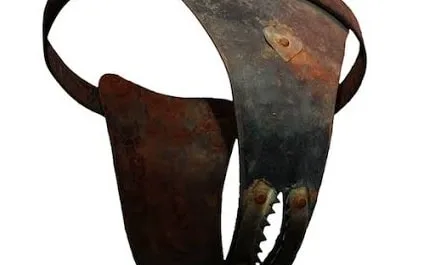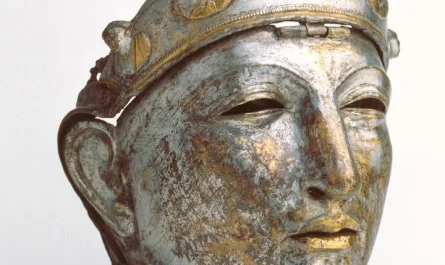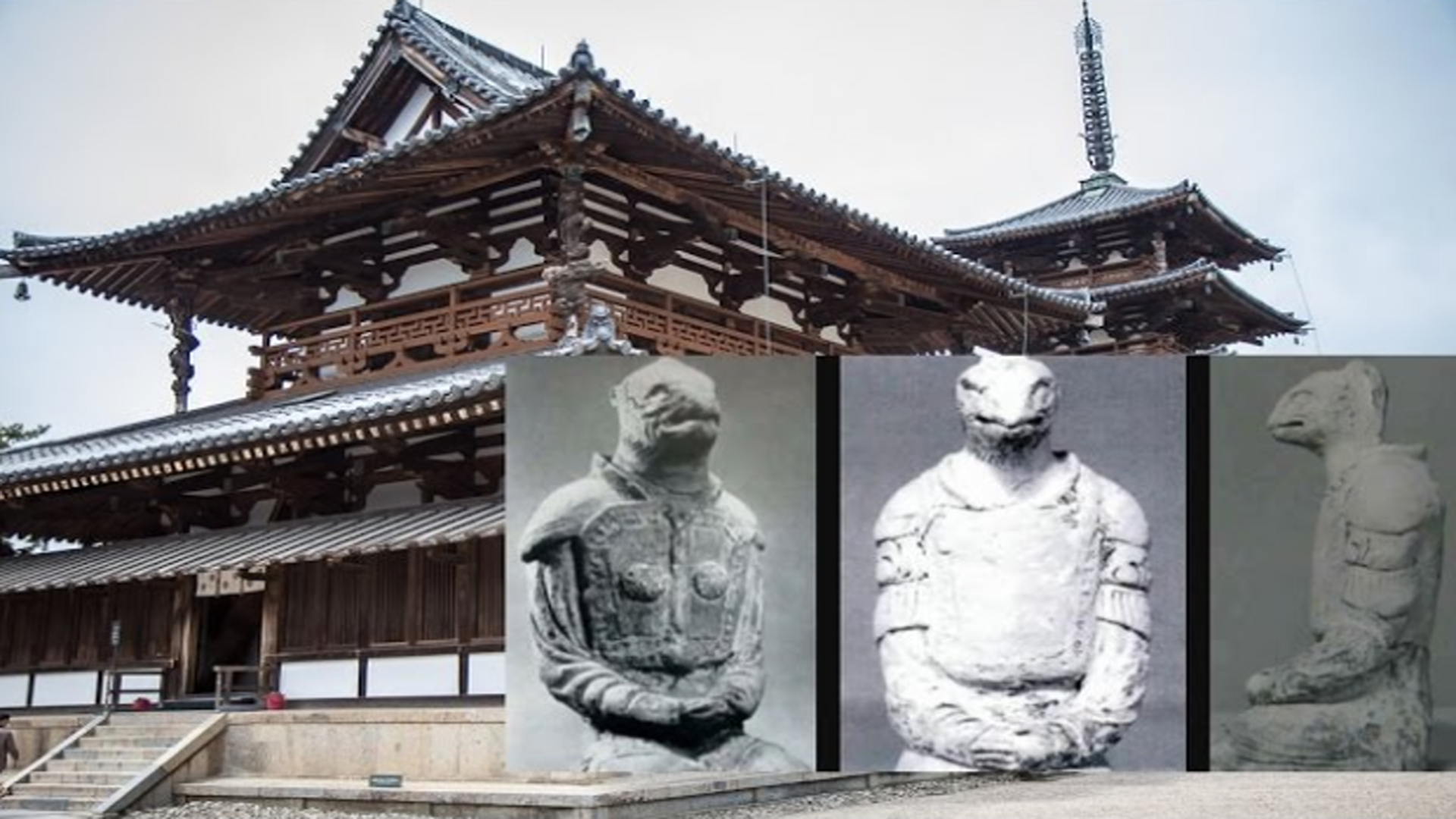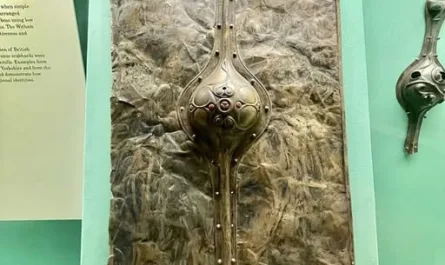Creepy palette…
Let me tell you why Egyptian Art Palette of King Narmer
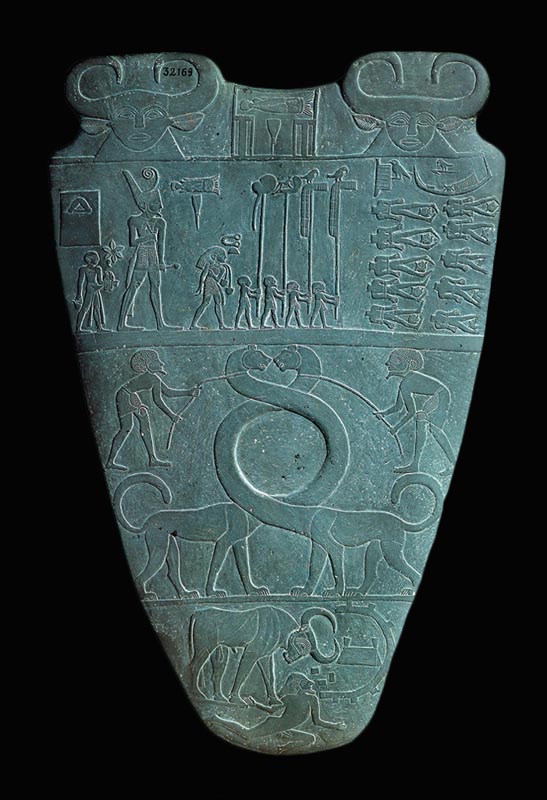
ARTIST Unknown
NAME Palette of King Narmer
LOCATION Egyptian Museum, Cairo, Egypt
YEAR 3200 – 3000 BC (circa)
TYPE Sculpture
DIMENSIONS 64×42 cm (25.2×16.5 in)
MATERIAL Gray-green siltstone
As anticipated in the last post, today we are going deeper in the Ancient Egyptian Art exploring a very important and still enigmatic artifact: the Palette of King Narmer.
Dated from about the 31st century BC, it contains some of the earliest hieroglyphic inscriptions ever found. They are made on a 63-centimetre-tall (2.07 ft), shield-shaped cosmetic ceremonial palette, carved from a single piece of flat, soft dark gray-green siltstone.
Among all the stuff I just said probably now you are wondering… “cosmetic ceremonial palette”?? Let me explain why this object is so significant even if you are not a make-up artist.
Palette’s story
The Palette, which has survived five millennia in almost perfect condition, was discovered by British archeologists James E. Quibell and Frederick W. Green, in what they called the Main Deposit in the Temple of Horus at Nekhen in 1897-98. It has been suggested to be a royal donation made to the temple since the object itself is a monumental and very elaborate version of a type of daily use palette used for grinding and mixing cosmetics. Palettes were generally smaller, flat and minimally decorated, but these larger and decorated ones were used in temple ceremonies. Narmer’s palette is one of the finest and oldest examples and it does not surprise to be found in Nekhen, or Hierakonpolis. It was, in fact, one of four power centers in Upper Egypt.
Back to the 31st century BC, the time of our palette, Egypt was divided in Upper (southern) and Lower (northern). Just after the unification, the Dynastic period started making Egypt a powerful and flourishing reign.
And here is where our story starts.
The palette, carved in raised relief, in fact depicts King Narmer on both sides in two ambiguous scenes. Ambiguity given, not only, but also, since on one side he is wearing the bulbed White Crown of Upper Egypt, and on the other side the Red Crown of Lower Egypt.
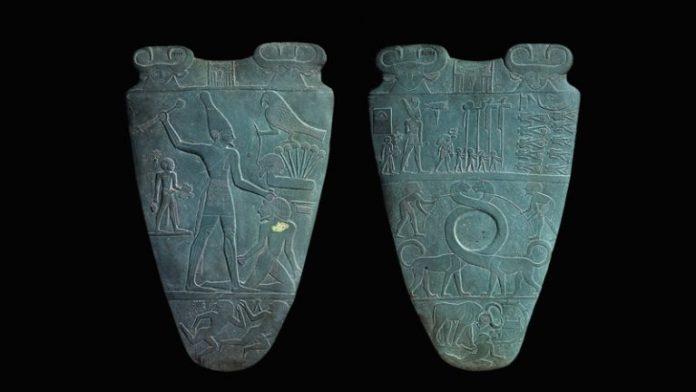

On both side the king is represented in human form, but of course in hierarchic scale, followed by his sandal-bearer. We know for sure is King Narmer since on the top of the palette, on both sides, are the central serekhs bearing the symbols n’r (catfish) and mr (chisel). They are phonetic representation of Narmer’s name.
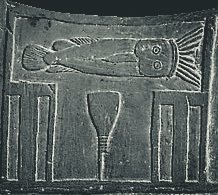
In the front, the king holds a mace and a flail, two traditional symbols of kingship and he is wearing the Red Crown of Lower Egypt. To his right are the hieroglyphic symbols for his name, though not contained within a serekh. Behind him also his sandal-bearer’s name may be represented by the rosette appearing adjacent to his head. Immediately in front of the pharaoh is a priest and four standard bearers.
At the far right of this scene are ten decapitated corpses, with heads at their feet, possibly symbolizing the victims of Narmer’s conquest.
Below the procession, two men are holding ropes tied to the intertwining necks of two serpopards. The serpopard is a mythological creature: a leopard with long snaky neck. The circle formed by their curving necks is the area where the cosmetics would have been ground.
At the bottom of the Palette, a bull is knocking down the walls of a city while trampling on a fallen foe. The bull could represents the king since often the pharaoh is referred to as “Strong Bull”.

The back of the palette is clearly dominated by Narmer who is going to kill with a mace a defeated enemy. Above the prisoner a falcon, representing Horus, perched above a set of papyrus flowers, the symbol of Lower Egypt.
Horus is holding a rope attached to a man’s head emerging from a marsh (another symbol of Lower Egypt), but the meaning is still mysterious.
Meaning Egyptian Art Palette of King Narmer
What it is clear is that on the back the King is wearing the White Crown of Upper Egypt. Because he is wearing the two crowns (this is the first example where both are used by the same ruler), the main interpretation seems to be that the tablet represents the unification of Upper and Lower Egypt happened thanks to the king Narmer who defeated his enemies.
More recent interpretations suggest that the palette represents the balance between order and chaos. It was in fact a fundamental element of the Egyptian idea of the cosmos. Or even the daily journey of the sun god that becomes another base in the Egyptian religion in the subsequent centuries.
I think the opportunity to read the palette in different ways is really fascinating and another example of how much we still need to understand from this amazing culture.

